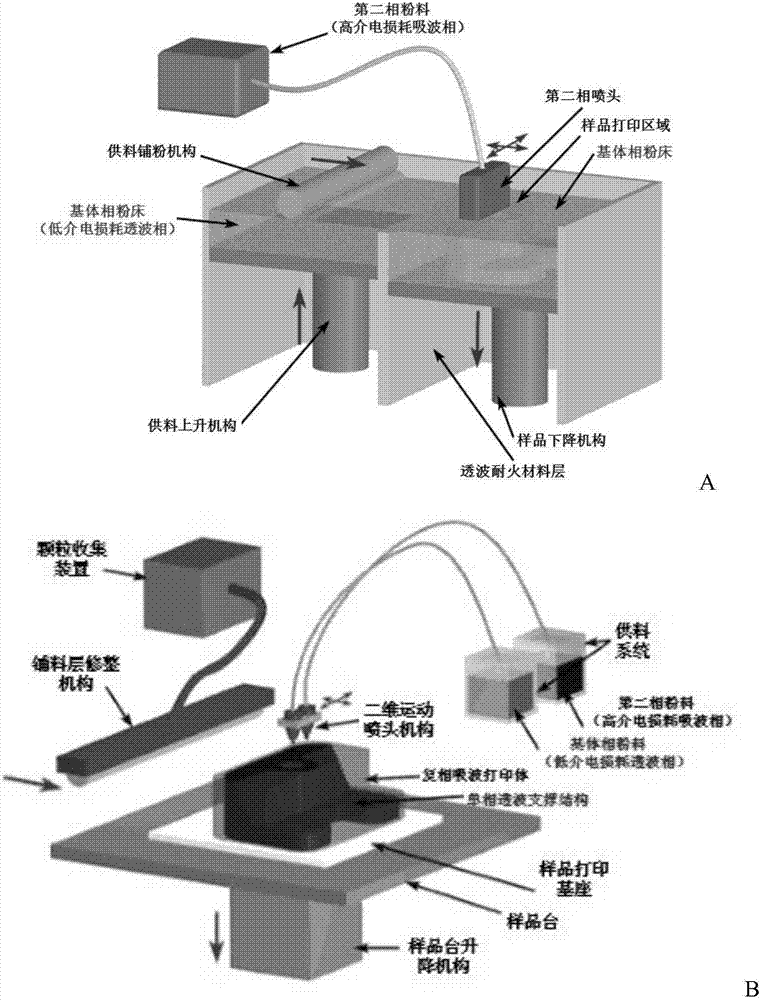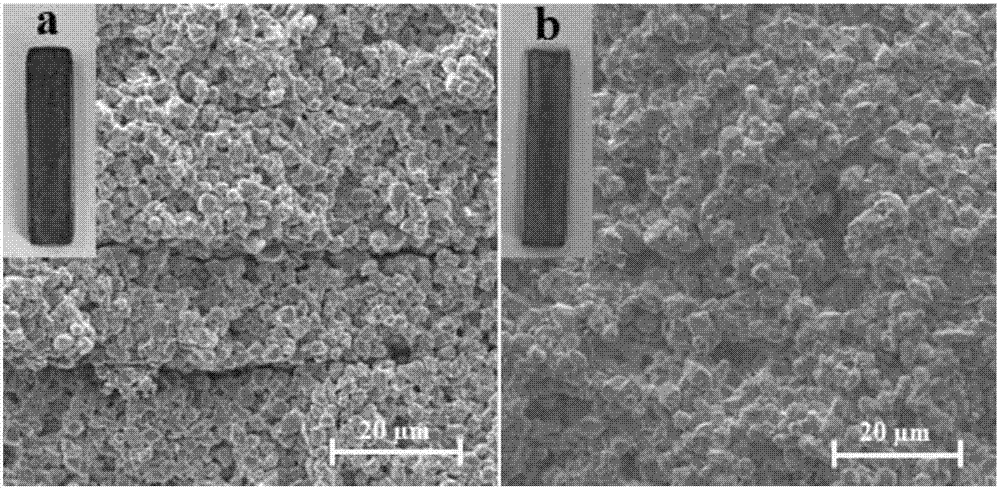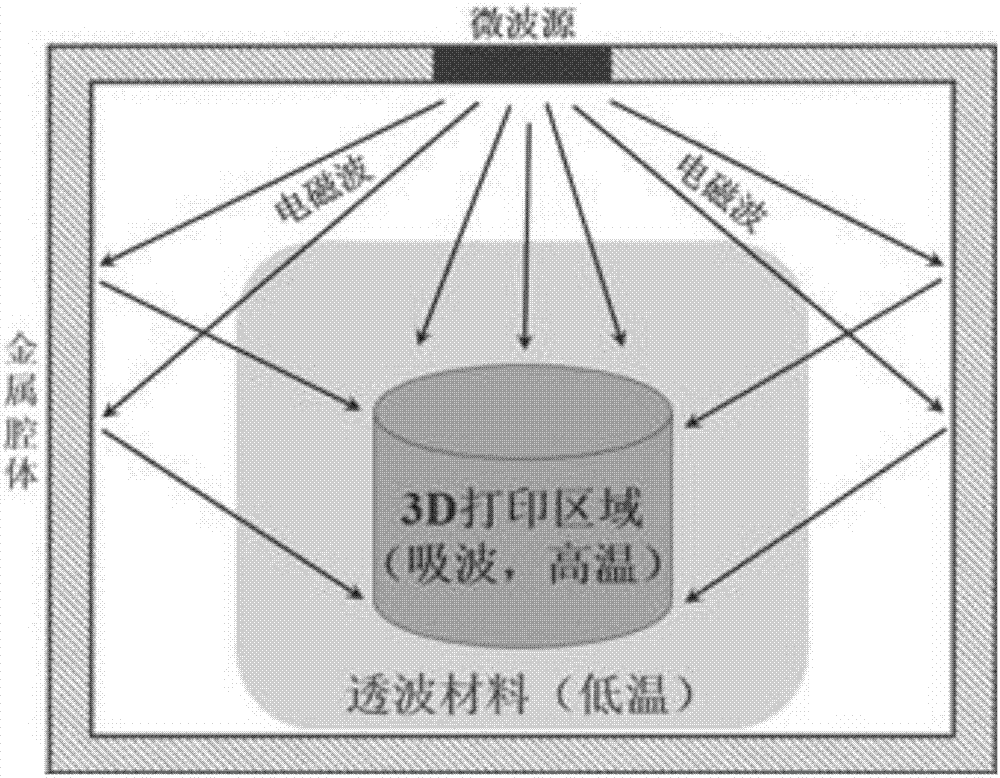3D printing method for ceramic material
A 3D printing and ceramic material technology, applied in the direction of additive processing, etc., can solve the problems of harsh use and storage conditions, uneven structure, high cost of macroscopic molding, etc., achieve simple raw material processing process, improve structural uniformity, and achieve rapid densification Effect
- Summary
- Abstract
- Description
- Claims
- Application Information
AI Technical Summary
Problems solved by technology
Method used
Image
Examples
Embodiment 1
[0059] use figure 1 The “powder-spreading-inkjet” configuration printer shown in Figure A in the middle uses the alumina material with low dielectric loss as the substrate, and the mixed slurry of magnesium oxide, silicon oxide and ferrite as the high dielectric loss “wave absorbing Ink material" is evenly sprayed layer by layer on the base material after the powder supply and powder spreading mechanism completes the action to form a printing area. After the 3D printing process is completed, apply a 2.45GHz multi-mode electromagnetic field to the entire powder bed (including the 3D printing area). By adjusting the input power of the electromagnetic wave, control the heating rate in the range of 60-70°C / min, and keep it warm for 5 minutes after reaching 1580°C. , and then stop the microwave input, and cool down with the furnace. The 3D printing sample is taken out from the alumina matrix powder bed, and the alumina powder particles adhered to the surface can be removed by simp...
Embodiment 2
[0061] use figure 1 The "multi-nozzle linkage" configuration printer shown in Figure B in the middle, two groups of nozzles are respectively responsible for the low dielectric loss wave-transmitting phase alumina and the high dielectric loss wave-absorbing phase (mixed slurry of magnesium oxide, silicon oxide and ferrite) ), and complete 3D printing layer by layer according to the designed shape structure of multiphase alumina ceramics and the relative position of each phase in space. Afterwards, move the printed body as a whole to the 2.45GHz multimode cavity. By adjusting the electromagnetic wave input power, control the heating rate in the range of 60-70°C / min. After reaching 1580°C, keep the temperature for 5 minutes, then stop the microwave input, and cool down with the furnace. The sample microstructure is as figure 2 As shown in b, the microstructure is uniform and compact as a whole, without obvious defects. The relative density of the sample measured by the Archime...
PUM
 Login to View More
Login to View More Abstract
Description
Claims
Application Information
 Login to View More
Login to View More - R&D
- Intellectual Property
- Life Sciences
- Materials
- Tech Scout
- Unparalleled Data Quality
- Higher Quality Content
- 60% Fewer Hallucinations
Browse by: Latest US Patents, China's latest patents, Technical Efficacy Thesaurus, Application Domain, Technology Topic, Popular Technical Reports.
© 2025 PatSnap. All rights reserved.Legal|Privacy policy|Modern Slavery Act Transparency Statement|Sitemap|About US| Contact US: help@patsnap.com



